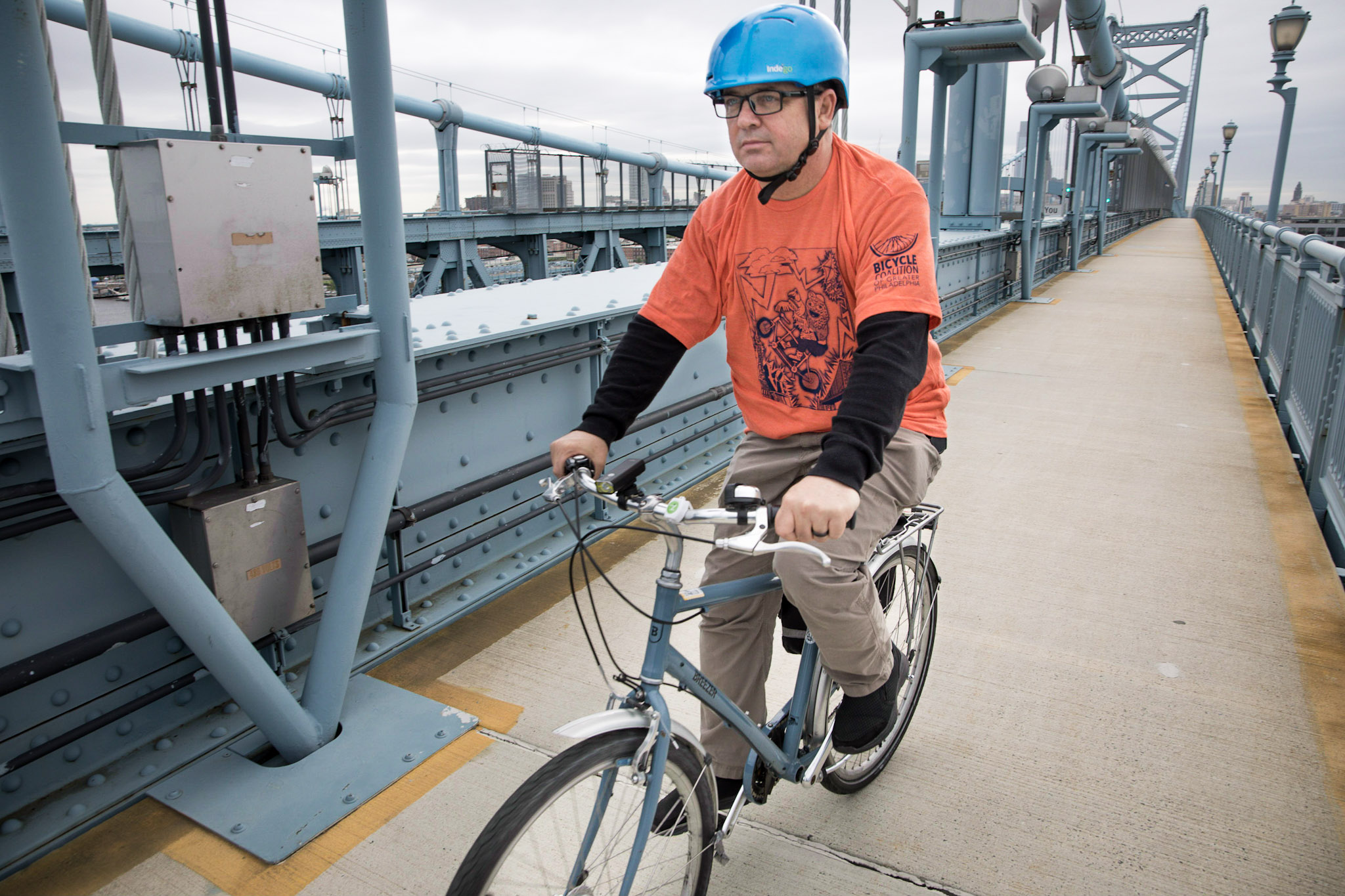By Randy LoBasso
Four weeks after 9/11, the Delaware River Port Authority ordered a shutdown of the Benjamin Franklin Bridge walkway after local reporter Paul Moriarty broadcast a report speculating about the walkway’s vulnerability to a terrorist attack.
Back then, the Ben Franklin Bridge walkway wasn’t patrolled by police, as Moriarty thought it should be. Given the worrisome atmosphere of the post-9/11 world, everyone was looking for flaws in our infrastructure and security systems.
Negotiations and a public outcry forced the hand of the Authority, and the walkway reopened in December 2001—but its semi-permanent closing had made an impact.
It brought attention to a larger issue that John Boyle, research director of the Bicycle Coalition of Greater Philadelphia, had been pressing since the ’90s: the Ben Franklin Bridge walkway should be a feature, not a bug, of the portal between Philadelphia and Camden.
The new ramp for the Ben Franklin Bridge walkway opened on June 4.
This is a ramp that took a long time to build. Time during which hundreds of people pushed their bicycles up a steep, grated staircase in Camden if they wanted to ride over the bridge; and people in wheelchairs couldn’t use the walkway at all.
Furthermore, because the bridge wasn’t patrolled, it was closed after dark. More than a few times, people walking across the bridge got stuck in the middle while crossing at dusk.
“People would either have to call the [Delaware River Port Authority], or in some cases, we heard of people jumping down onto the highway and walking back,” says John Boyle.
A New Jersey resident, Boyle has made it his mission to advocate for a remaking of the Ben Franklin Bridge walkway, which he uses on his daily work commute.
As a member of the DRPA’s citizens’ advisory board, he worked with the Authority and the state to get it done. He successfully advocated for both bridge police patrol and a ramp on the Camden side of the bridge to allow pedestrians and cyclists easier access to the walkway.
When the bridge was closed again without notice after the London Bombings in July 2005, the walkway issue gained more traction, and bicycle coalition volunteers Matthew Anastasi and Jim Kriebel formed a Ben Franklin Bridge walkway committee. Its goal: to grant pedestrians full access to the bridge and construct an ADA accessible ramp.
In 2008, DRPA added the ramp into its five-year Capital Improvement Program, but the home stretch wasn’t smooth.
In 2011, the Authority suffered a public relations crisis after an uptick in the bridge toll. Pressure mounted and the ramp project was deferred. However, a coalition of advocates, ranging from Camden-based businesses to nonprofits and elected officials pressed back and got the decision reversed in early 2012.
In 2017, the DRPA approved $7.8 million in funds for the bridge ramp, and with more than $4 million in additional funds from the Federal Highway Administration and the William Penn Foundation, the project was finally underway.
It is “the first big expenditure from the Authority’s Capital Budget to make the bridge walkway more accessible for all users,” notes Boyle. The narrow portion of the walkway has been widened and an ADA-compliant ramp on the Camden side added.
Boyle is excited that the ramp is open—but not just because it allows cyclists to use the walkway without getting off their bikes.
“In addition to not wanting to walk my bike up those 39 steps ever again, we’re at a time where Camden is going through a major redevelopment,” adds Boyle. “It will enable much greater access between the city of Camden and the city of Philadelphia.”




